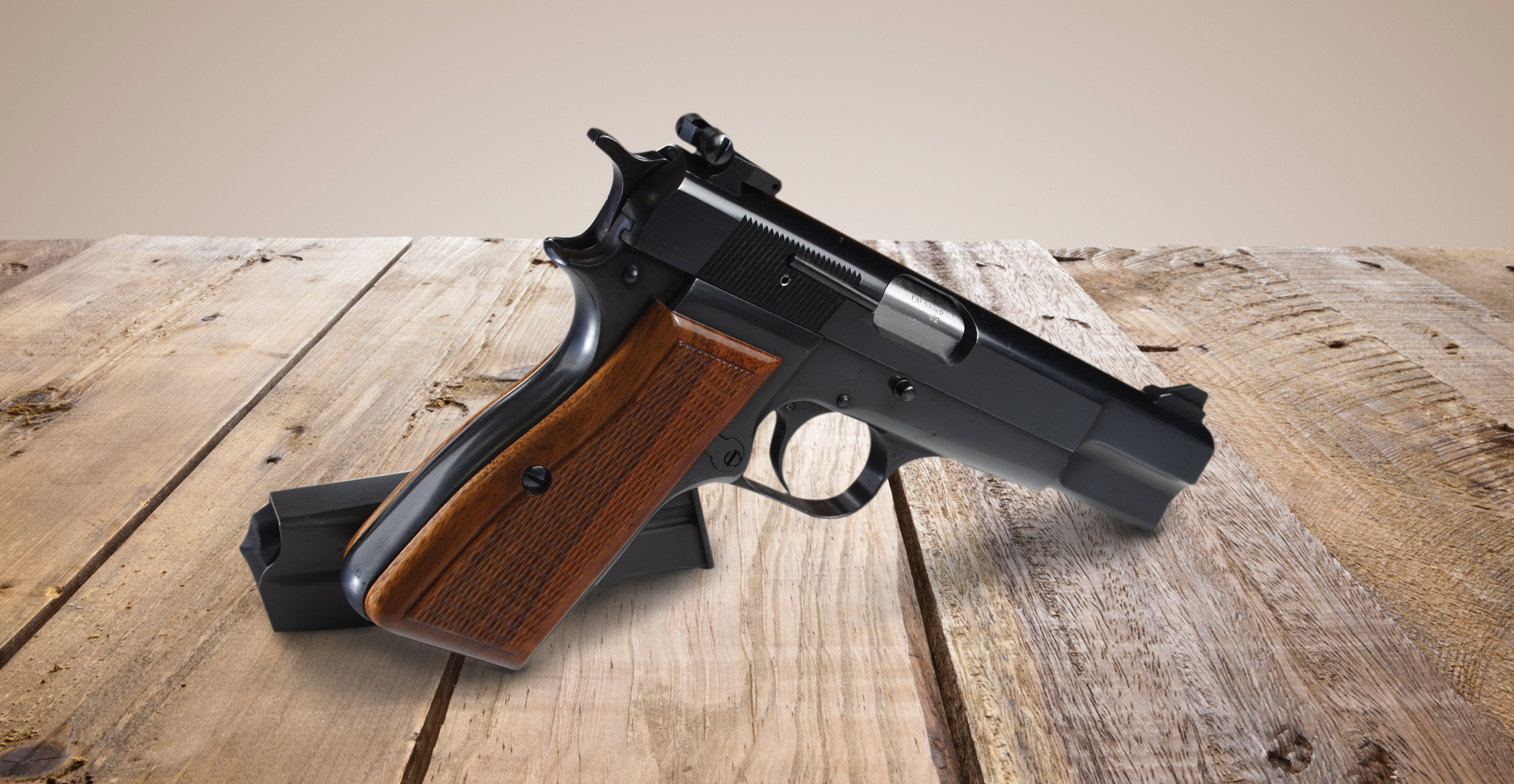Relatively few weapons were used by both Allied and Axis forces in World War Two, and the few that were (the Oerlikon cannon, for example) were generally so heavily modified by each side that they were effectively different weapons.
However, one handgun was virtually unique in that it was used by British and German forces who faced each other in combat – the Browning High Power pistol.
What’s in a name?
There is an on-going debate about what this pistol is called – some people are certain that it’s a “High Power“ while others are equally sure that it’s a “Hi-Power.” Actually, both are correct.
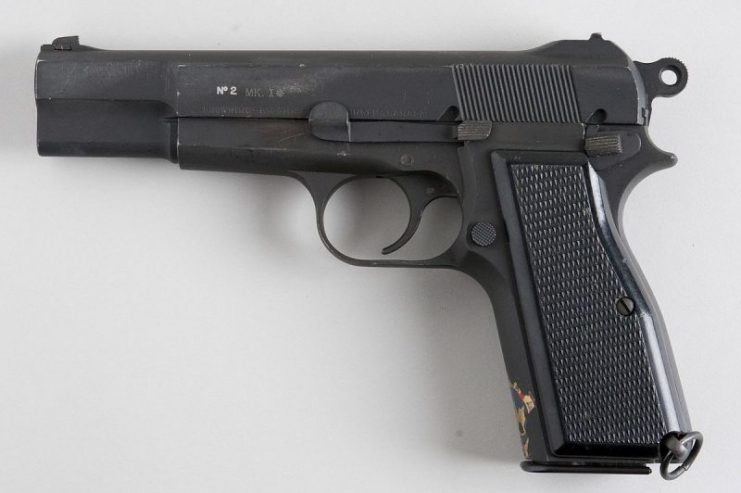
The version originally sold by Fabrique Nationale Herstal (FN) from 1935 was identified as the “High Power.“ In 1954, the pistol was marketed through the Browning Arms Company (BAC) in the US, a subsidiary of FN. At that point, it became the “Hi-Power” to distinguish it from the High-Power hunting rifle also sold by BAC.
As this article relates to the wartime use of this pistol, I’ll be referring to it as the “High Power.“
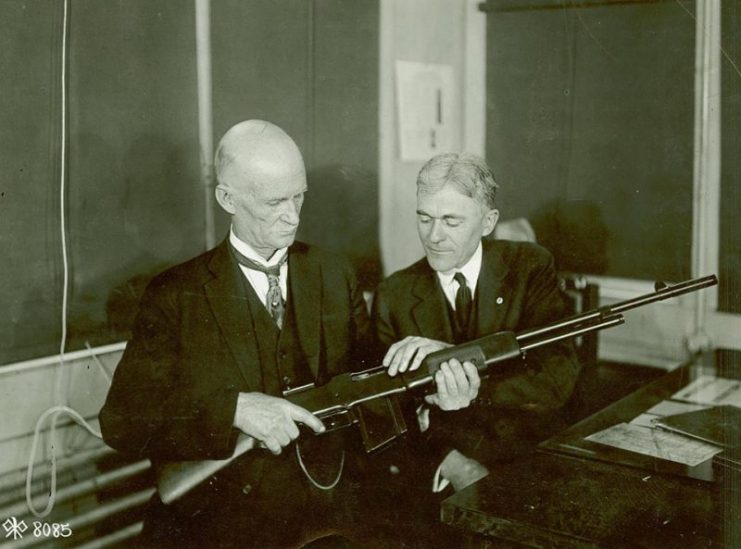
Pre-War
The original design work on what would become the High Power pistol was started in the early 1920s in response to a French military requirement for a Grande Puissance (High Power) sidearm.
This didn’t refer to the shooting power of the pistol, but to a requirement for a magazine which held at least ten rounds of 9mm ammunition – more than any contemporary semi-automatic service pistol.
American designer John Moses Browning had been responsible for the design of one of the most influential guns of the 20th century: the Colt 1911. But he also had a long-standing relationship with Belgian state firearms producer, Fabrique Nationale Herstal.
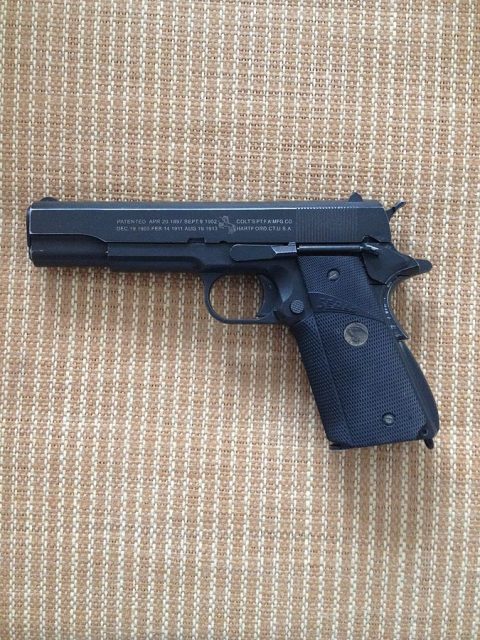
In response to the French requirement and on behalf of FN, he produced a design for a full-size military sidearm with a locked-breech recoil system and a double column, sixteen-round magazine.
Browning died in 1926 at the Herstal factory before the design was completed. Rights to the new pistol passed to FN and their Chief Designer, Dieudonné Saive (who would later design the FN-FAL Battle Rifle), took over work on the new pistol.
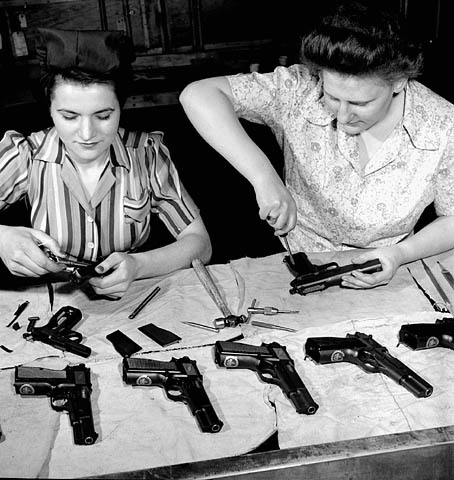
By the early 1930s, he had produced a revised design for a single-action pistol with a double-stack magazine holding up to thirteen 9mm Parabellum rounds and featuring a complex trigger mechanism which extended up into the area of the slide in an attempt to keep the grip as slim as possible.
The design was completed in 1935 and FN released it as the FN Model 1935.
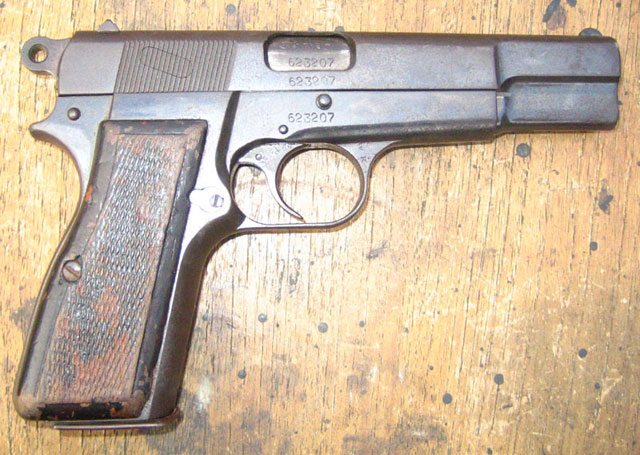
First versions included an optional wooden shoulder stock which clipped into a groove on the rear of the grip, and an adjustable tangent rear sight graduated to a very optimistic 1,000 meters (1,093 yards)!
This was quickly replaced by a rear sight graduated to an only slightly more realistic 500 meters (546 yards).
The magazine capacity of the new pistol was a revelation compared to other service pistols of the period. The British Webley Revolver held just six rounds, the US Colt 1911A1 seven, and the Russian Tokarev TT-33, the German P-08 (Luger), its replacement the Walther P-38, and the Japanese Nambu all held eight rounds.
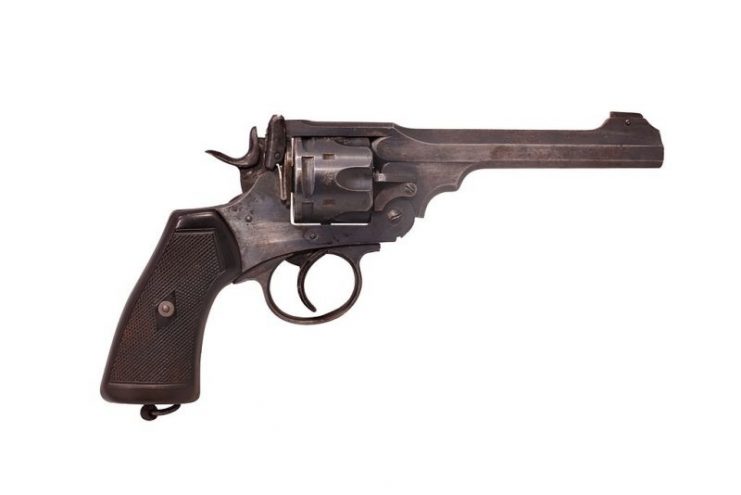
Ironically, the French army decided that it wasn’t interested in the High Power, though it was adopted as the principal sidearm of the Belgian Army.
In September 1939, Britain and France declared war on Nazi Germany following the invasion of Poland. Belgium remained neutral.
Around 35,000 High Power pistols were manufactured up to that time, and FN concluded a licensing deal with Canadian firearms producer John Inglis and Company in Toronto which also permitted production of the High Power there.
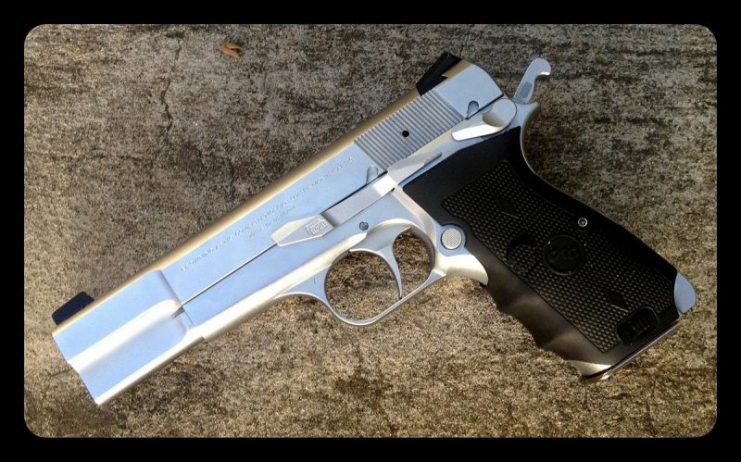
German use of the High Power
On 10th May 1940, German forces invaded Belgium. Fighting lasted for just 18 days and after that, Belgium remained occupied by Germany until 1944.
The FN plant was captured virtually intact, and the Nazis installed managers and technicians from Deutsche Waffen-und Munitionsfabriken (DWM) and used this as a production facility for ammunition and weapons.
One of the weapons produced there was the High Power pistol, re-designated the “Pistole 640(b).” More than 300,000 of these pistols were produced during the remainder of the war.
Early versions used captured parts, but later versions featured a non-adjustable rear sight and omitted the magazine disconnect safety mechanism to speed up and simplify production.
Detailed records are very difficult to find, but it seems that the 640(b) was not issued to troops in the Wehrmacht though it was provided to units of the Waffen-SS, the Brandenburg special forces battalion, and to combat units of the Luftwaffe including Fallschirmjäger (paratroopers).
German adoption of the High Power was partly down to the fact that this pistol used the same cartridge as the two other main German service pistols of the period: the Luger and the Walther P-38.
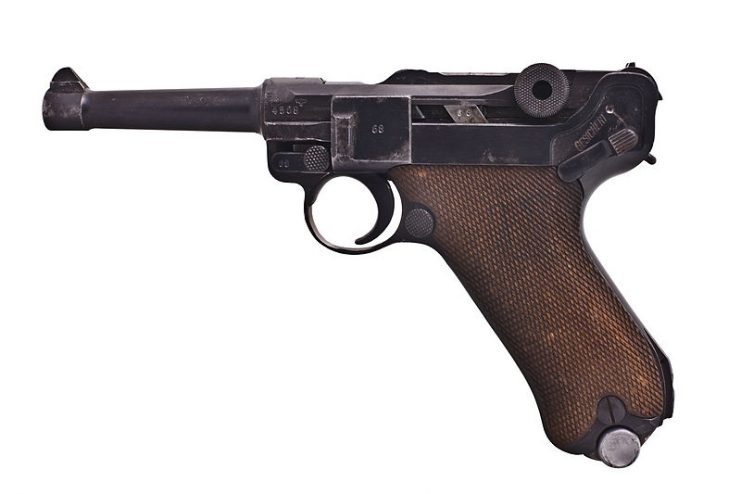
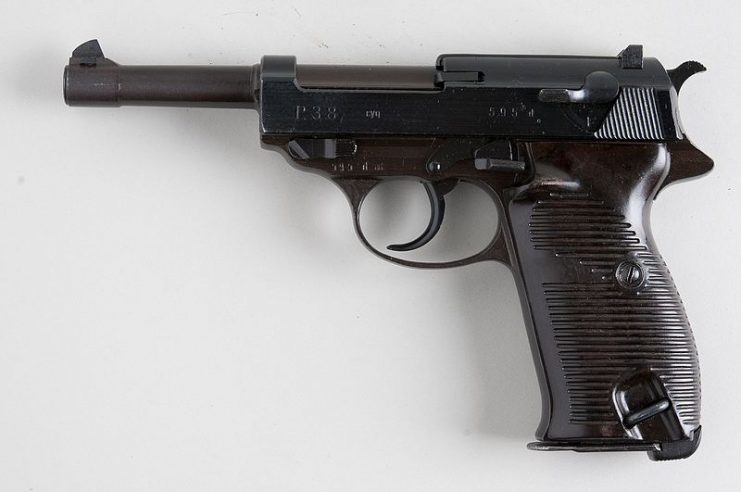
British use of the High Power
John Inglis and Company began production of the High Power in 1940, initially to fulfill a large order from the forces of Chinese Nationalist leader Chiang Kai-Shek.
However, later production was taken by Britain, mainly for use by special forces units including the Special Air Service (SAS), the Special Operations Executive (SOE) and paratroop units. The appeal of this high capacity pistol to units which were intended to operate beyond normal supply lines was obvious.
Around 160,000 Inglis High Powers were produced in Toronto during World War Two though the bulk of these were exported to China. Like the German version, many later Inglis High Powers replaced the tangent rear sight with a simpler, non-adjustable sight.
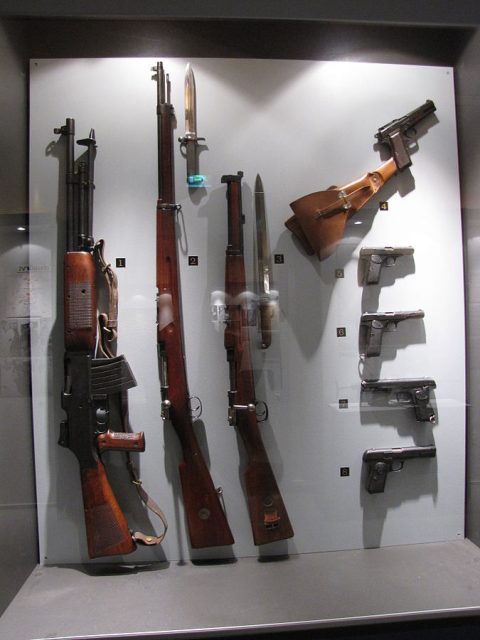
As with German use of the High Power, detailed records of its use by Allied combat units are difficult to find.
It is believed that over 40,000 Inglis High Powers were delivered to Britain during 1944/45. Anecdotal evidence suggests that at least some High Powers were used by officers of the British 1st Airborne Division during Operation Market Garden, the attempt to seize vital bridges in Holland in September 1944.
By the time of the largest airborne operation of World War Two, Operation Varsity, in March 1945, large numbers of High Power pistols are known to have been issued to troops in the British 6th Airborne Division.
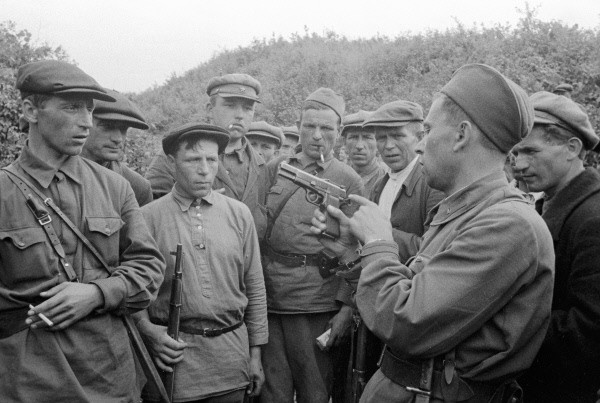
It has also been said that the High Power was used by the special operations forces of the US Office of Strategic Services (OSS), the forerunner of the modern CIA and there is photographic evidence to show that this pistol may also have been used by irregular, partisan forces of Russia.
In Operation Market Garden, British and Polish paratroopers faced units of the Waffen-SS. In Operation Varsity, British paratroopers faced the German 1st Parachute Army. So, it is entirely possible that in either or both operations, troops from opposing sides but both using the High Power pistol may have faced each other in combat, probably the only occasion during World War Two when this occurred.
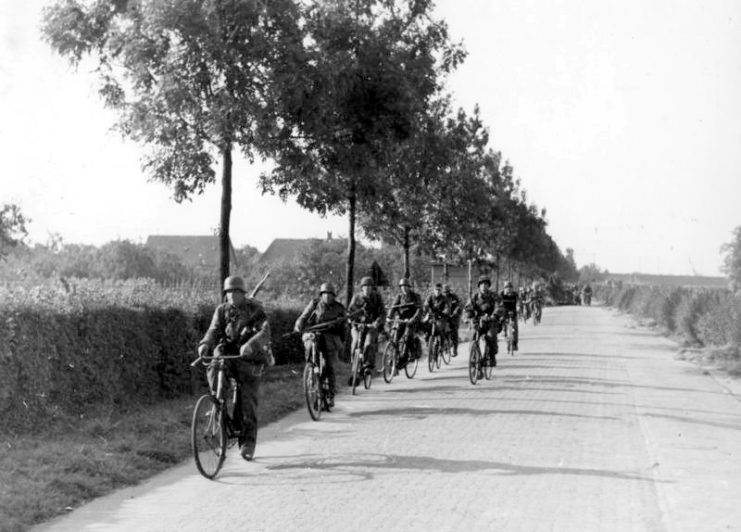
Post War
In 1954, the High Power was adopted as the standard sidearm of the British Army with the designation L9A1.
By the late 1960s, it had been adopted as the main military sidearm of more than 90 countries around the world.
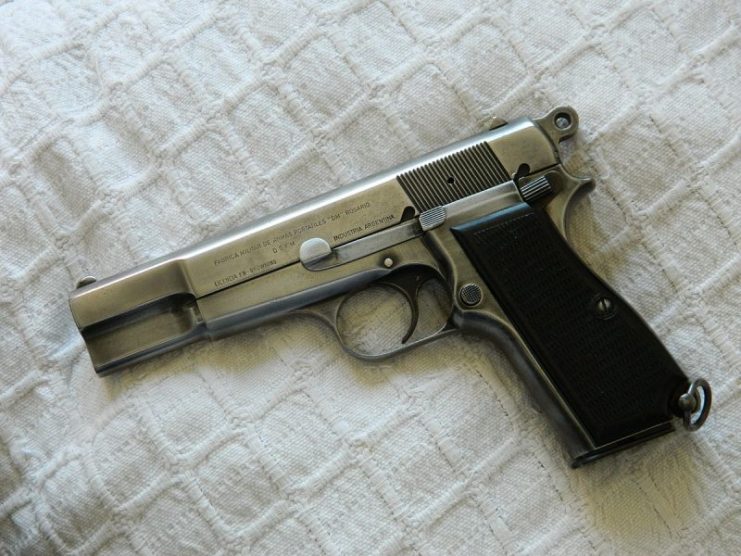
During the Falklands conflict in 1982 British troops equipped with the L9A1 found themselves once again facing an enemy provided with the same pistol – the High Power was also the main sidearm of the Argentine Army.
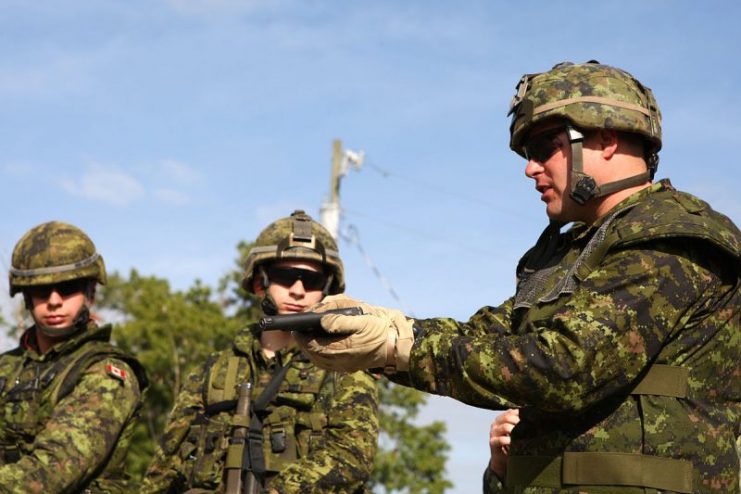
Over one and a half million High Power pistols were sold by FN and their subsidiaries and manufacturing finally ended in February 2018 after more than 80 years of continuous production.
Read another story from us: Myths and Legends of the Iconic 1911
The High Power pistol became one of the most used military sidearms in the world, but it still holds the distinction of being the only handgun used in numbers by both Allied and German forces during World War Two.
